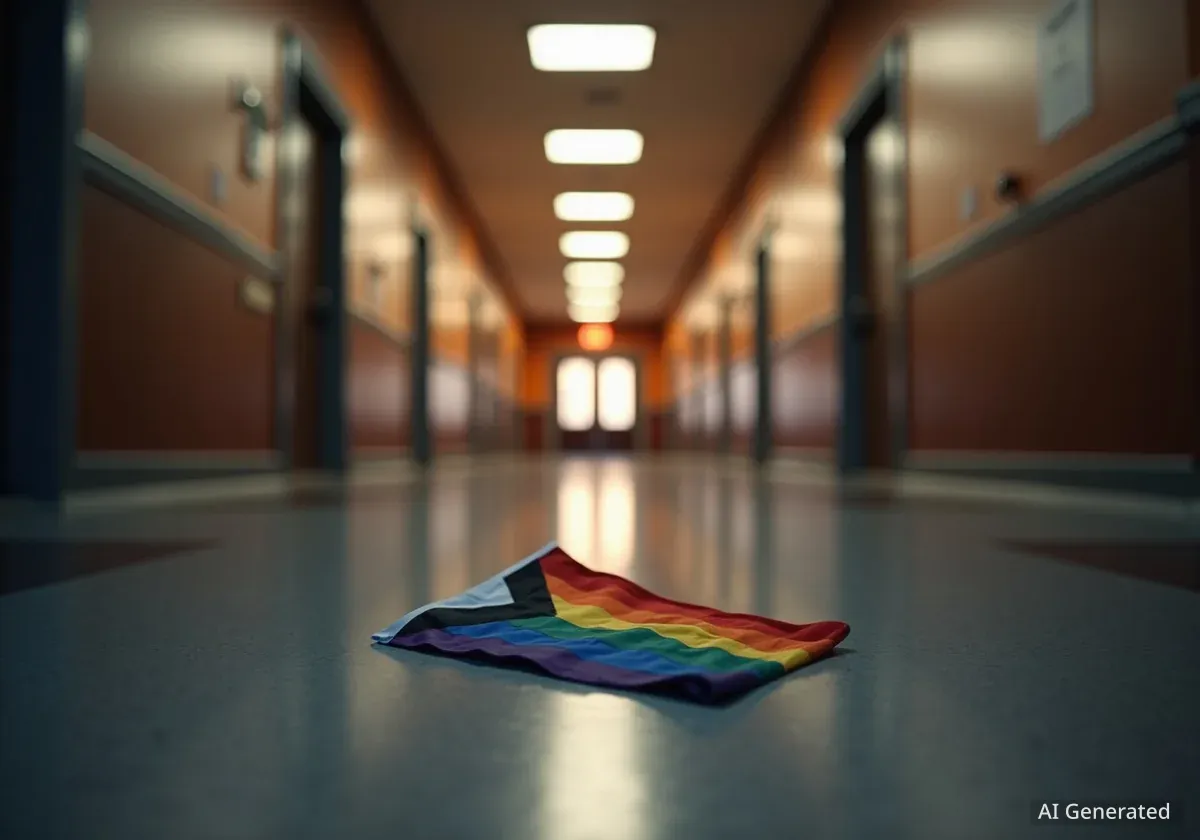Chicago Public Schools (CPS) has reported a significant drop in student enrollment for the current academic year, continuing a decade-long trend of declining numbers. As of the 20th day of school on September 15, the district's student population stood at approximately 316,000, a decrease of about 3% from the previous year.
This recent decline follows a brief two-year period of slight growth, which was largely attributed to an influx of migrant students. The new data reaffirms the district's ongoing challenge with shrinking enrollment, which has seen the student body decrease by nearly 93,000 since the 2009-2010 school year.
Key Takeaways
- CPS enrollment fell by approximately 3% to 316,000 students for the current school year.
- The district has lost 76,000 students since the 2015-2016 school year and 93,000 since 2009.
- The percentage of Latino students decreased, while enrollment for White, Asian, and multiracial students saw an increase.
- A Southeast Side charter school, Epic Academy, is set to close due to financial pressures linked to low enrollment.
- Despite enrollment issues, the district reported a slight increase in overall student attendance rates.
A Deepening Enrollment Challenge
The latest figures from Chicago Public Schools highlight a persistent downward trend in its student population. After serving 409,000 children in the 2009-2010 school year, the district has experienced a steady decline. The loss of 76,000 students just since the 2015-2016 school year underscores the scale of this long-term challenge.
During a recent board meeting, Interim CPS CEO Macquline King addressed the numbers. She explained that the decrease was observed across various student populations.
"Enrollment decreased across the majority of grade levels and most student groups, including [students] identifying as Black, Latinx, economically disadvantaged, English language learners and students in temporary living situations," King stated.
This widespread decline suggests complex factors are influencing family decisions and demographics within the city, impacting nearly every aspect of the school system.
Enrollment Over the Years
Chicago Public Schools' student population has fallen from 409,000 in the 2009-2010 school year to approximately 316,000 today, a drop of 93,000 students in just over a decade.
Shifting Demographics Within the District
The overall enrollment drop is accompanied by notable shifts in the district's demographic makeup. The percentage of Latino students, the largest group in CPS, fell from 47.3% to 46.4%. In contrast, King noted that enrollment among White, Asian, and multiracial students increased.
The number of Black students also decreased, but their overall proportion of the student body remained stable at around 34%. Additionally, the district saw a rise in the number of students with disabilities being served.
Why Demographics Matter
Changes in student demographics can affect how a district allocates resources, including funding for bilingual education, special education services, and culturally relevant curriculum. Tracking these shifts is essential for equitable planning.
Despite the concerning enrollment figures, King shared some positive news regarding student engagement. "Attendance rates are up among all student groups compared to previous years," she reported. According to district data, overall attendance through the first four weeks of school rose to 92.6%, a slight increase from 92.3% last year.
Operational Updates and Charter School Concerns
Beyond enrollment, the district is also tackling logistical challenges. King provided an update on bus services, an area where CPS has struggled due to a nationwide driver shortage. She confirmed that 12,656 students are now on bus routes, an increase from 10,800 last month.
Crucially, more than 98% of students with disabilities who require bus transportation are now receiving it. "Requests for transportation continue to come in daily and our goal is to get all eligible students on a bus within 10 days of those requests," King added. The district also plans to relaunch its Hub Stop pilot program to improve transportation efficiency.
Epic Academy Closure Highlights Funding Issues
The impact of declining enrollment is being felt acutely at the school level. Epic Academy, a small charter high school on the Southeast Side, announced it will close after the current academic year. School leadership cited low enrollment as a primary factor, which led to a "structural deficiency" in its funding.
At the board meeting, Epic Academy students and staff pleaded for intervention. "My classmates and I don’t just want to graduate, we want to one day come back as proud alumni who can give back to the same school that has given so much to us," said Ayomide Olatunji, a senior at the school.
The decision to close came just months after the Chicago school board voted to renew Epic's contract for two years, raising questions about the district's oversight process.
Scrutiny of the Charter Renewal Process
The sudden closure of Epic Academy has prompted scrutiny of how CPS evaluates and renews charter school contracts. Andrew Escalante, a teacher at Epic for eight years, directly questioned the board's decision-making.
"How was this approved if Epic did not have the funds to operate?" Escalante asked. "What concrete steps is CPS prepared to take to make sure our students and families are not left scrambling if the school closes."
His concerns were echoed by board member Yesenia Lopez, who acknowledged a failure in the system. "During their renewal process we heard from stakeholders, including the charter operator’s own board advocating for continuation, fast forward and we find ourselves here," Lopez said. "The disconnect must be acknowledged and addressed with all parties involved to identify solutions."
The situation at Epic Academy serves as a stark example of how enrollment trends directly impact the stability of individual schools and the communities they serve, putting pressure on the district to reevaluate its procedures.





